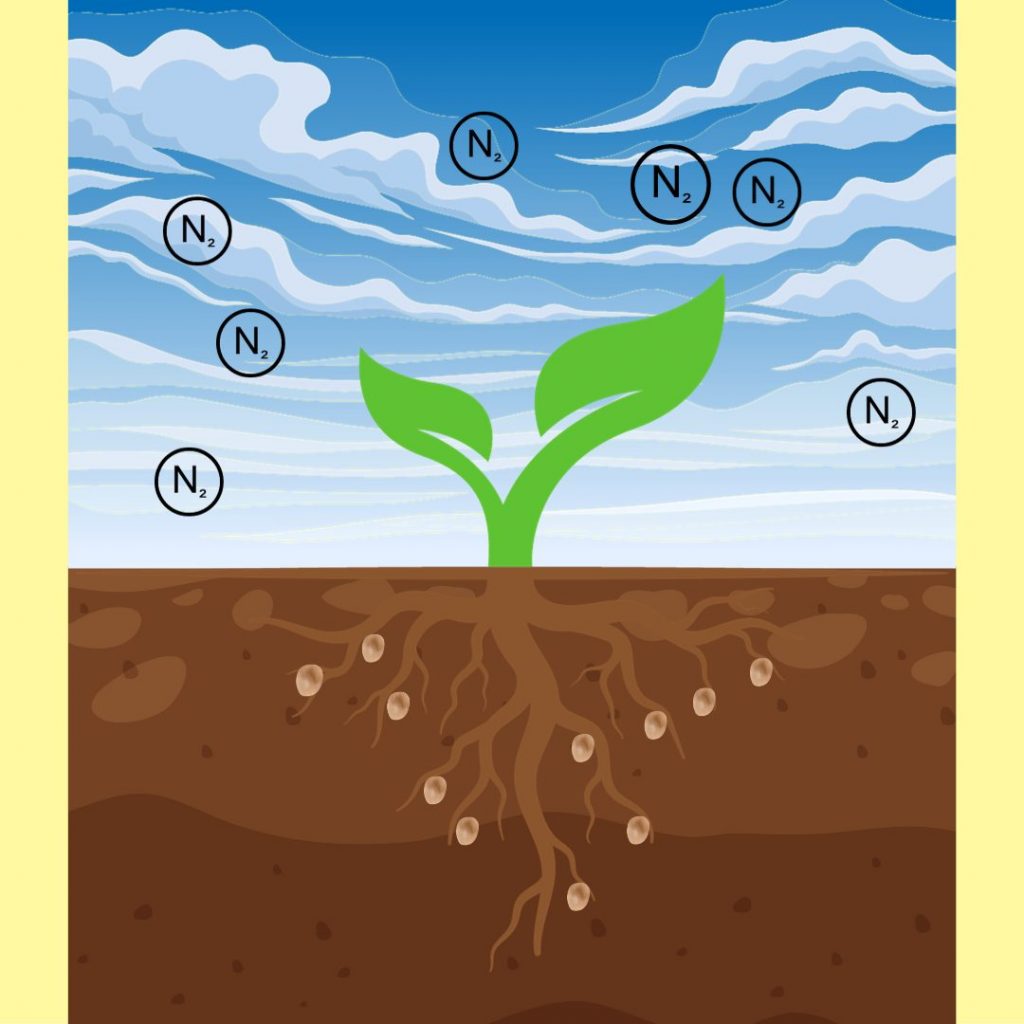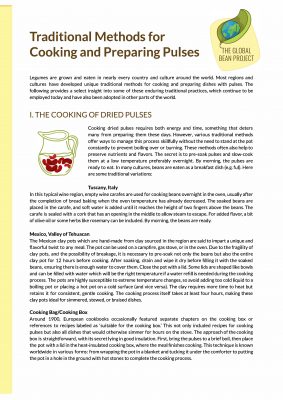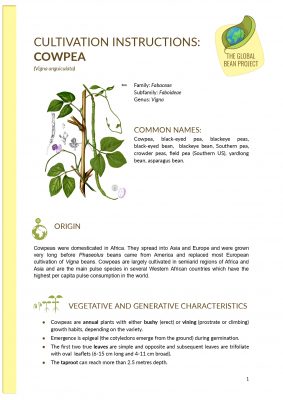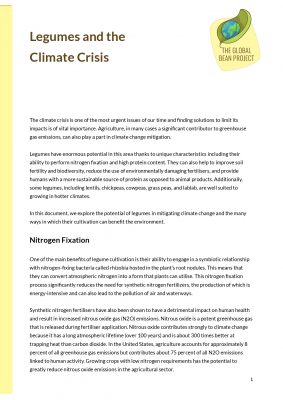The climate crisis is one of the most urgent issues of our time and finding solutions to limit its impacts is of vital importance. Agriculture, in many cases a significant contributor to greenhouse gas emissions, can also play a part in climate change mitigation.
Legumes have enormous potential in this area thanks to unique characteristics including their ability to perform nitrogen fixation and high protein content. They can also help to improve soil fertility and biodiversity, reduce the use of environmentally damaging fertilisers, and provide humans with a more sustainable source of protein as opposed to animal products. Additionally, some legumes, including lentils, chickpeas, cowpeas, grass peas, and lablab, are well suited to growing in hotter climates.
In this document, we explore the potential of legumes in mitigating climate change and the many ways in which their cultivation can benefit the environment.
Nitrogen Fixation
One of the main benefits of legume cultivation is their ability to engage in a symbiotic relationship with nitrogen-fixing bacteria called rhizobia hosted in the plant’s root nodules. This means that they can convert atmospheric nitrogen into a form that plants can utilise. This nitrogen fixation process significantly reduces the need for synthetic nitrogen fertilizers, the production of which is energy-intensive and can also lead to the pollution of air and waterways.
Synthetic nitrogen fertilisers have also been shown to have a detrimental impact on human health and result in increased nitrous oxide gas (N2O) emissions. Nitrous oxide is a potent greenhouse gas that is released during fertiliser application. Nitrous oxide contributes strongly to climate change because it has a long atmospheric lifetime (over 100 years) and is about 300 times better at trapping heat than carbon dioxide. In the United States, agriculture accounts for approximately 8 percent of all greenhouse gas emissions but contributes about 75 percent of all N2O emissions linked to human activity. Growing crops with low nitrogen requirements has the potential to greatly reduce nitrous oxide emissions in the agricultural sector.

Legumes can fix atmospheric nitrogen through nitrogen-fixing bacteria hosted in the plant’s root nodules. Image: The Global Bean Project.
Carbon Sequestration and Soil Health
Legumes are able to perform carbon sequestration without (or with lesser) assistance from nitrogen fertilisers compared to other crops, a benefit that is passed on to crops that come after them as well. Carbon sequestered by legumes is often stored deeper within the soil by their extensive root systems, which can extend to a depth of up to 2m. Improving soil organic carbon through the production of biomass which does not rely on environmentally damaging fertilisers means that legume crops can be a restorative agricultural force.
Furthermore, legumes improve soil fertility by enhancing organic matter content in the soil. This benefits not only legume crops but also has positive effects on the overall soil ecosystem. Crops that are planted in the same field will receive additional nutrients, stimulating their productivity.
Soil structure and water retention can also be improved through the cultivation of legumes. Thanks to their extensive root systems, legumes can aid in the prevention of soil erosion by binding soil particles together and helping to prevent the loss of topsoil during heavy rains. Releasing a variety of carbon-rich compounds, these root systems also help to sequester carbon in deeper soil layers, where it is less likely to be released back into the atmosphere.
Livestock and Animal Agriculture
Legume crops such as soybeans and alfalfa can be a significant source of protein in animal agriculture. As a sustainable source of protein, legumes reduce the environmental pressures associated with other livestock feed crops. This is particularly important as livestock farming is a major contributor to deforestation and greenhouse gas emissions.
When produced in an environmentally friendly way, ideally locally and without the use of unnecessary fertilisers, legumes can be a sustainable food source that contributes to livestock efficiency. By using this high protein food source, the growth of livestock can be optimised and their health improved. For this reason, many different livestock animals eat grain legumes including peas, fava beans, lupins, and soybeans.
Along with other grain legumes such as peas, fava beans, and lupins, soybeans are a common source of protein for livestock. Image: Weltacker Berlin.
Sustainable Diets for Humans
Legumes are also a sustainable and nutritious food source for humans. Diets that incorporate legumes can help to reduce the carbon footprint associated with many food systems.
Industrial meat production is a major contributor to climate change. A reduction in meat consumption by humans is an essential step in moving towards diets and food systems with lower greenhouse gas emissions. Methane gas, which is 25 times more potent than carbon dioxide when it comes to trapping heat in the atmosphere, is a major issue associated with animal agriculture and human meat consumption.
As well as reducing our meat consumption, legumes can increase our intake of fibre and complex carbohydrates. Image: Ceilia Antoni.
Overconsumption of meat can also contribute to vascular diseases, diabetes, and certain forms of cancer. In addition to being a healthier protein supply, legumes also increase our fibre intake which is necessary for a balanced diet, and provide us with complex carbohydrates
Conclusion
Legumes have many advantageous qualities when it comes to climate change mitigation in agriculture. Nitrogen fixation, carbon sequestration, and soil health improvement are just some of the ways that legume crops can help aid in the fight against climate change.
Plant and animal agriculture, human diets, and ecosystems all stand to benefit from an increase in legume cultivation and consumption. As we face the challenges of a changing climate, incorporating more legumes into agricultural systems and diets can help in building a more sustainable future.




